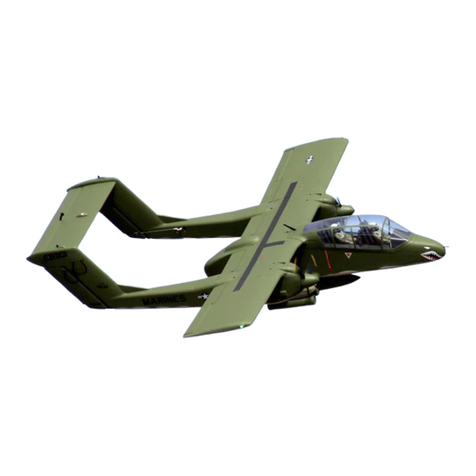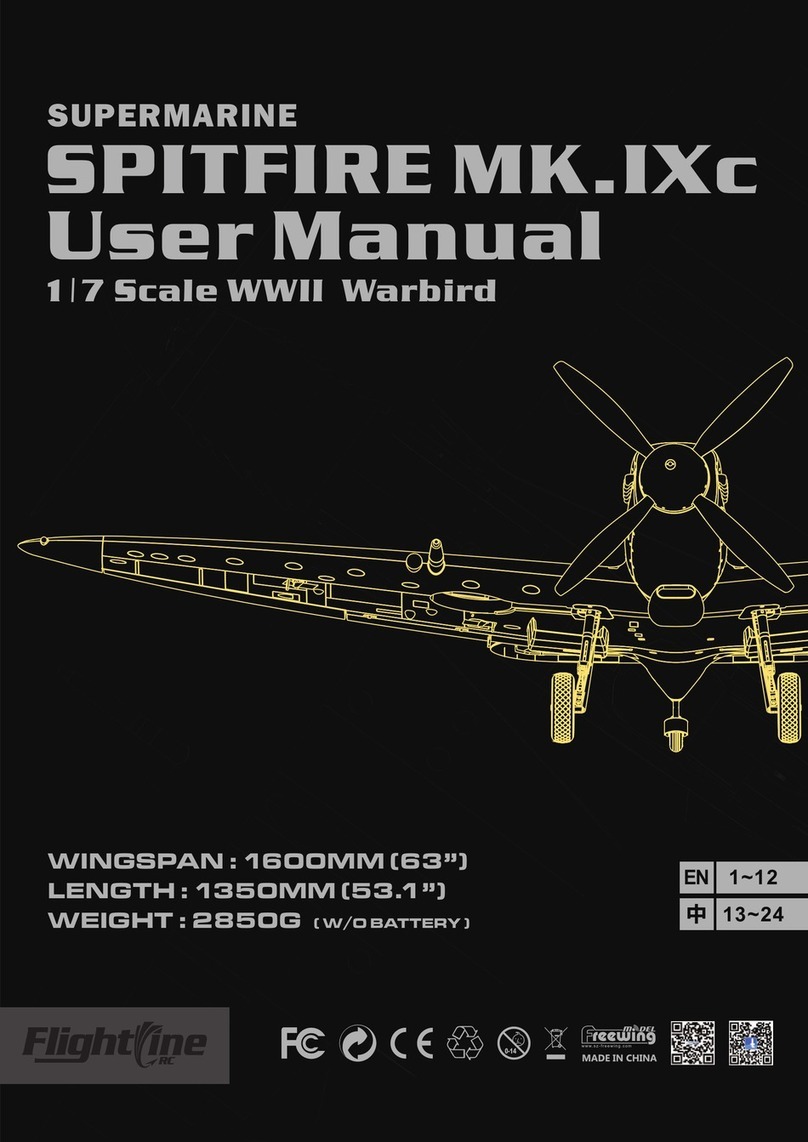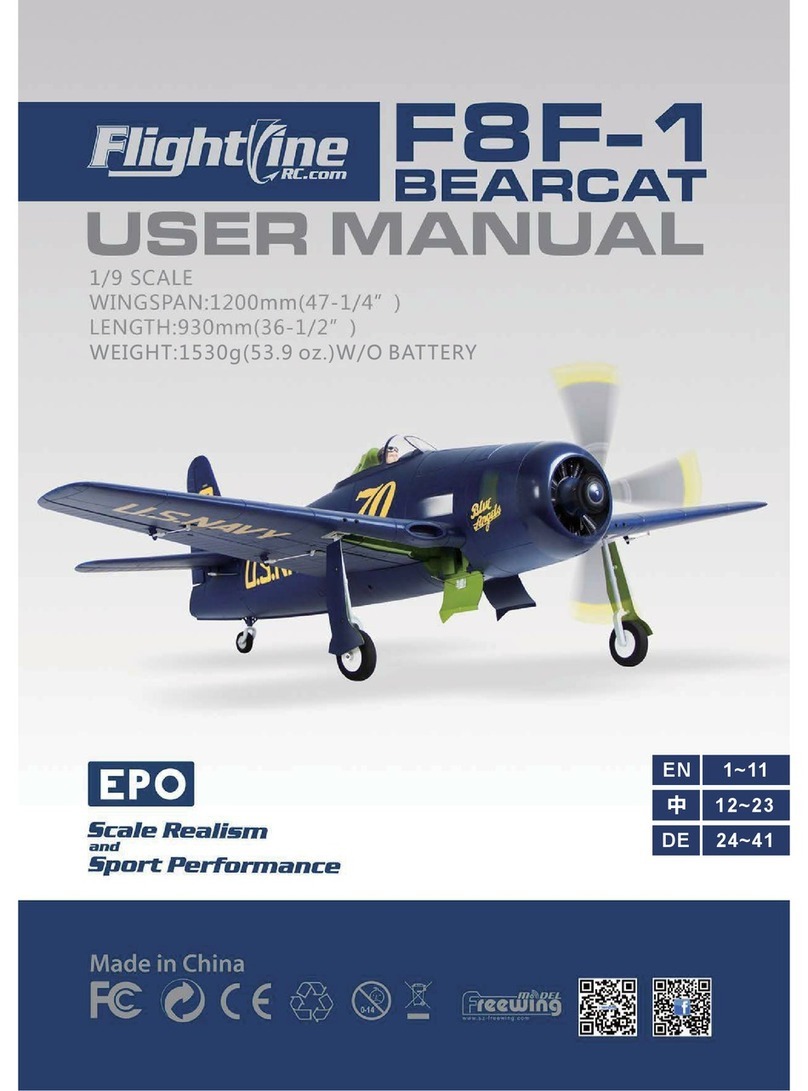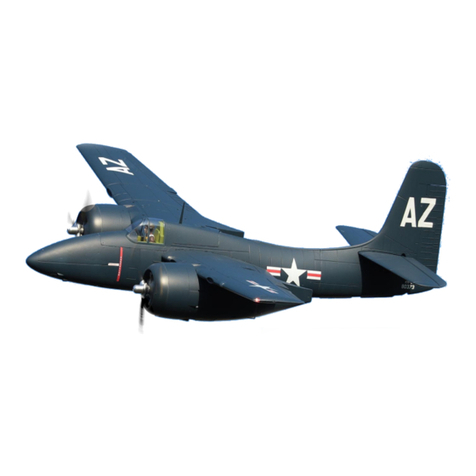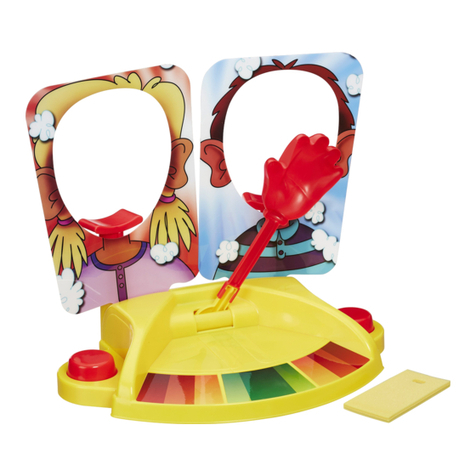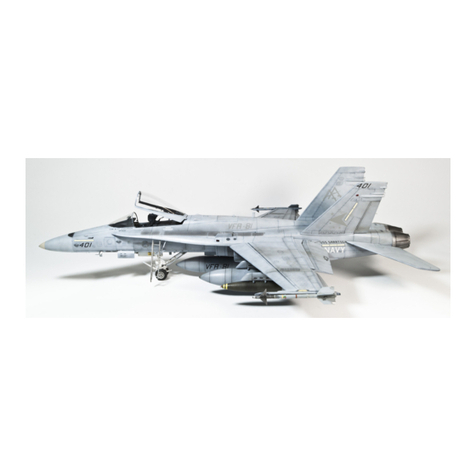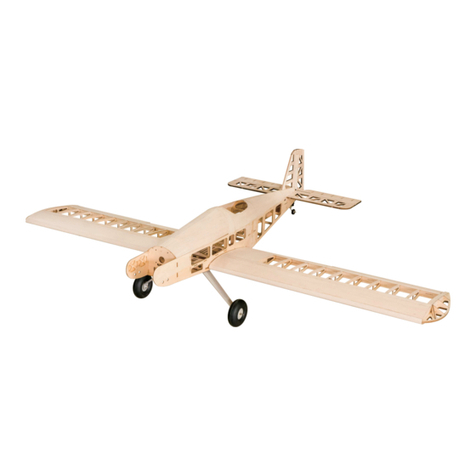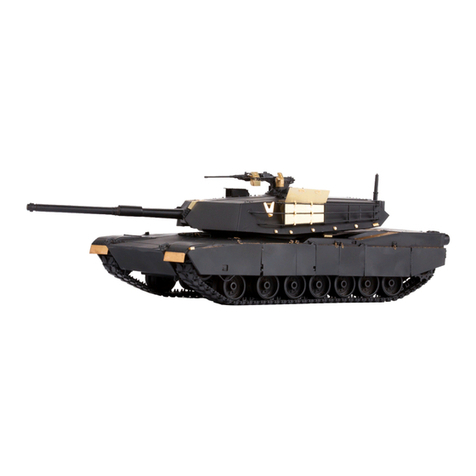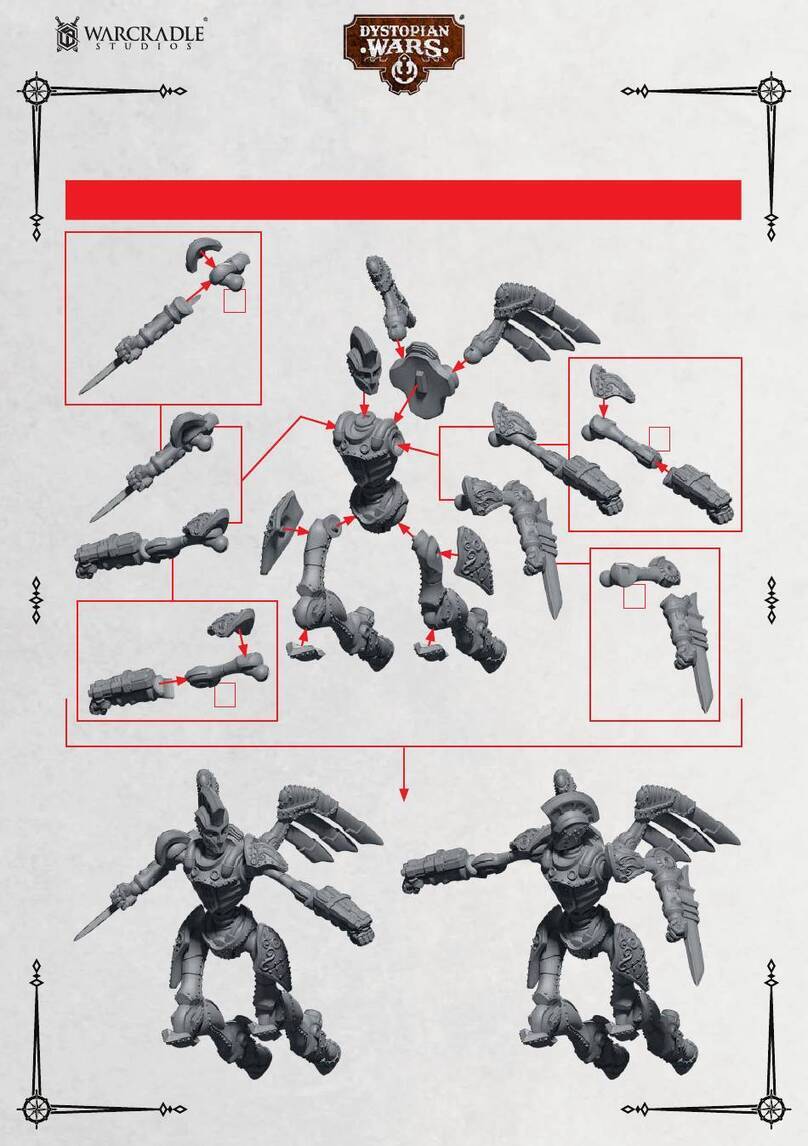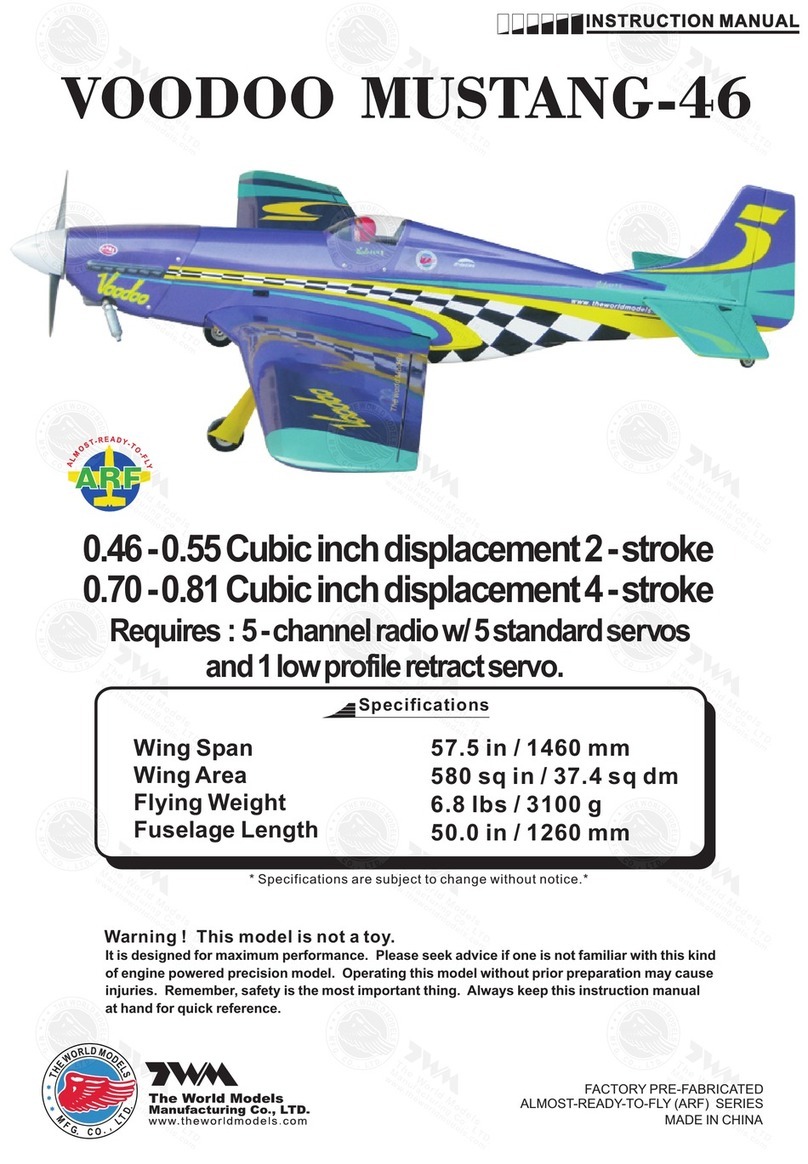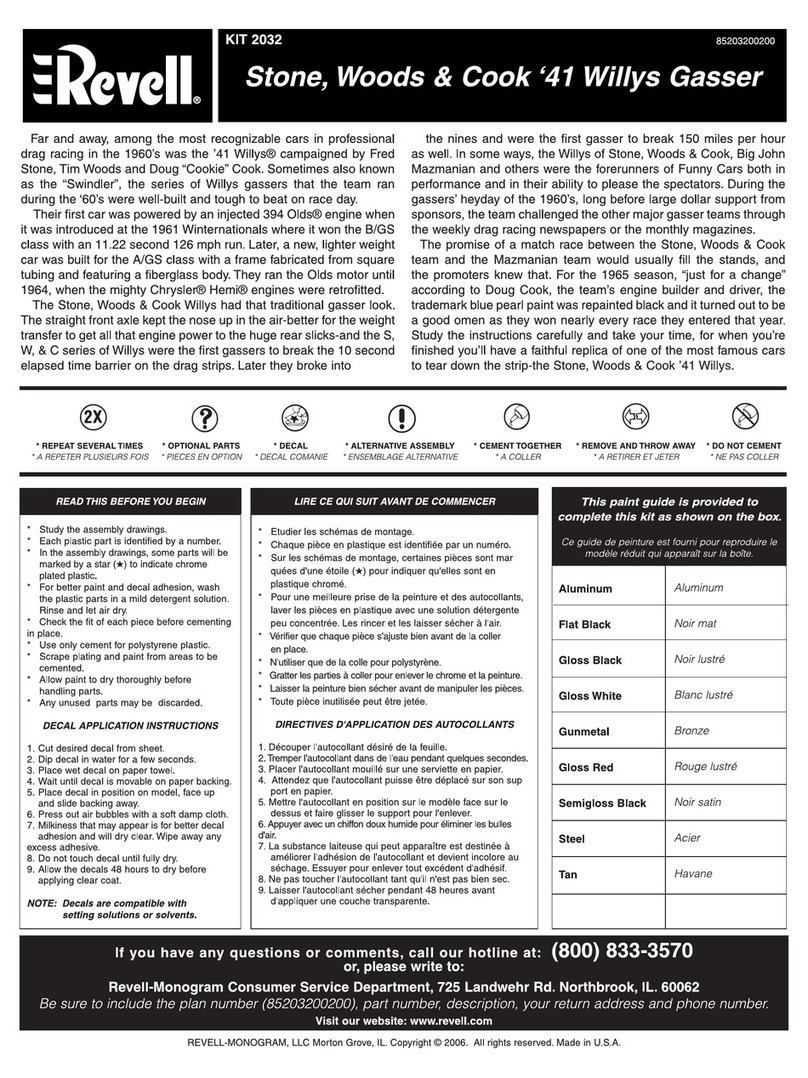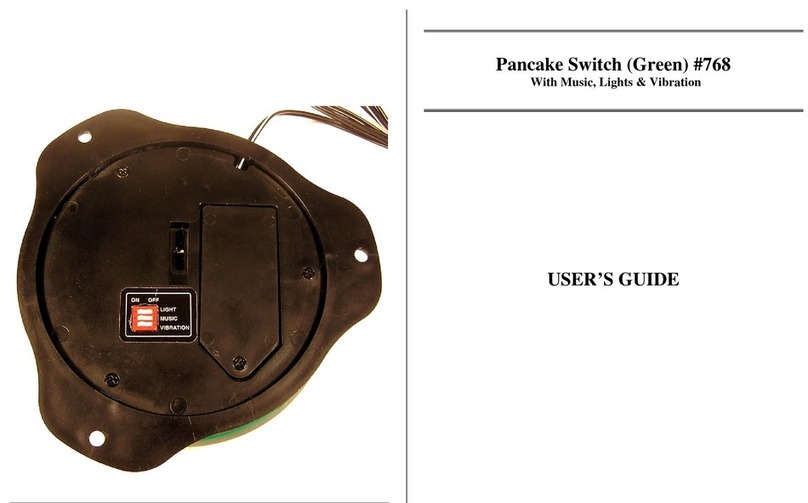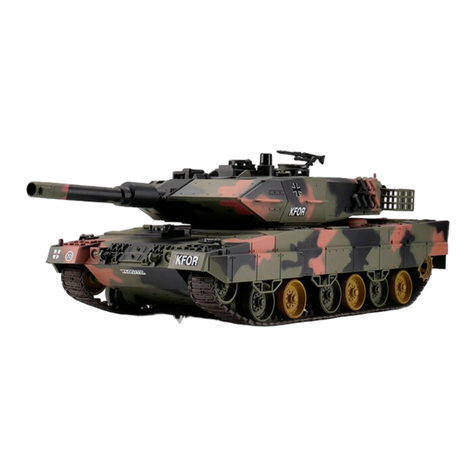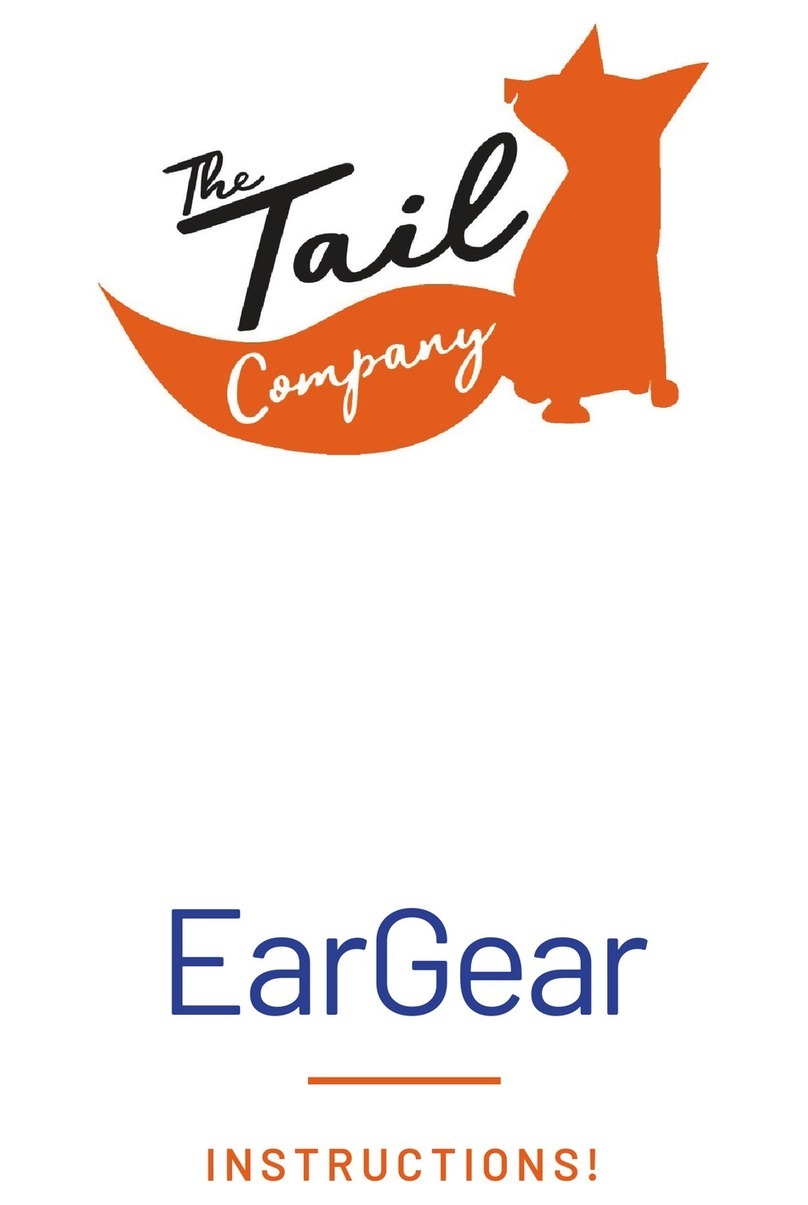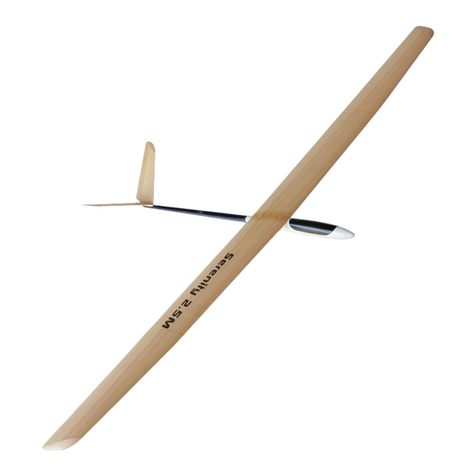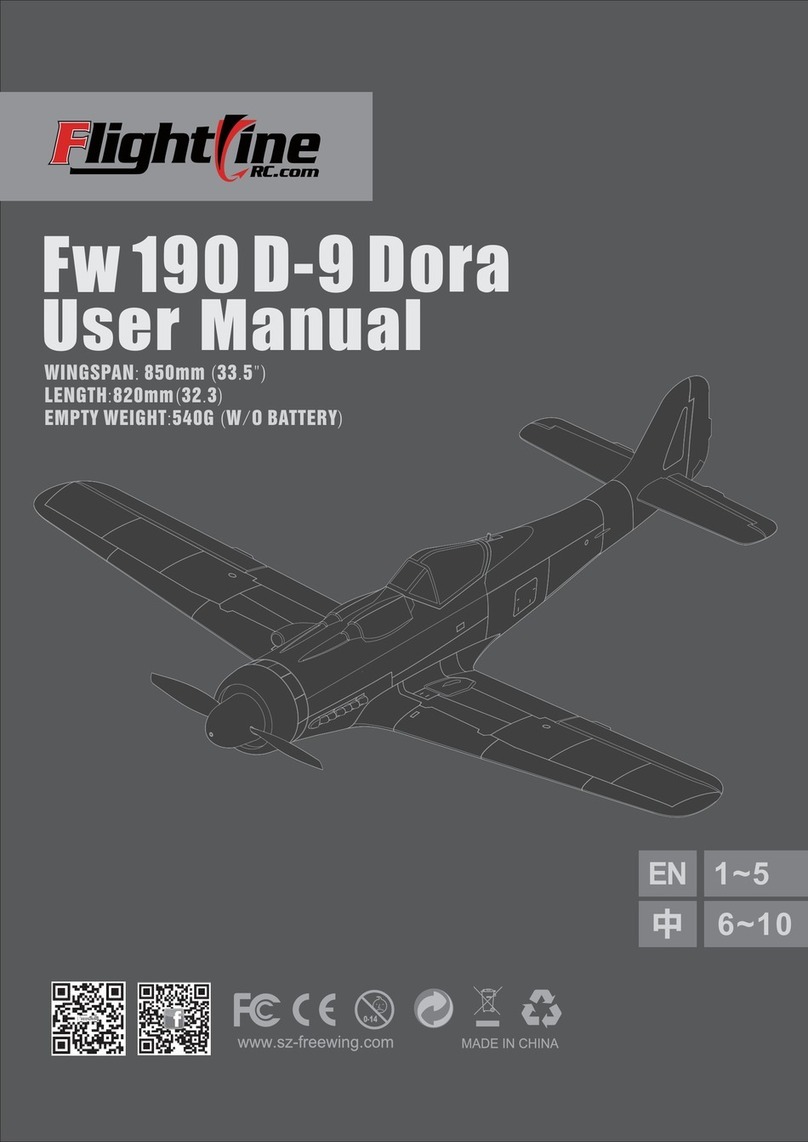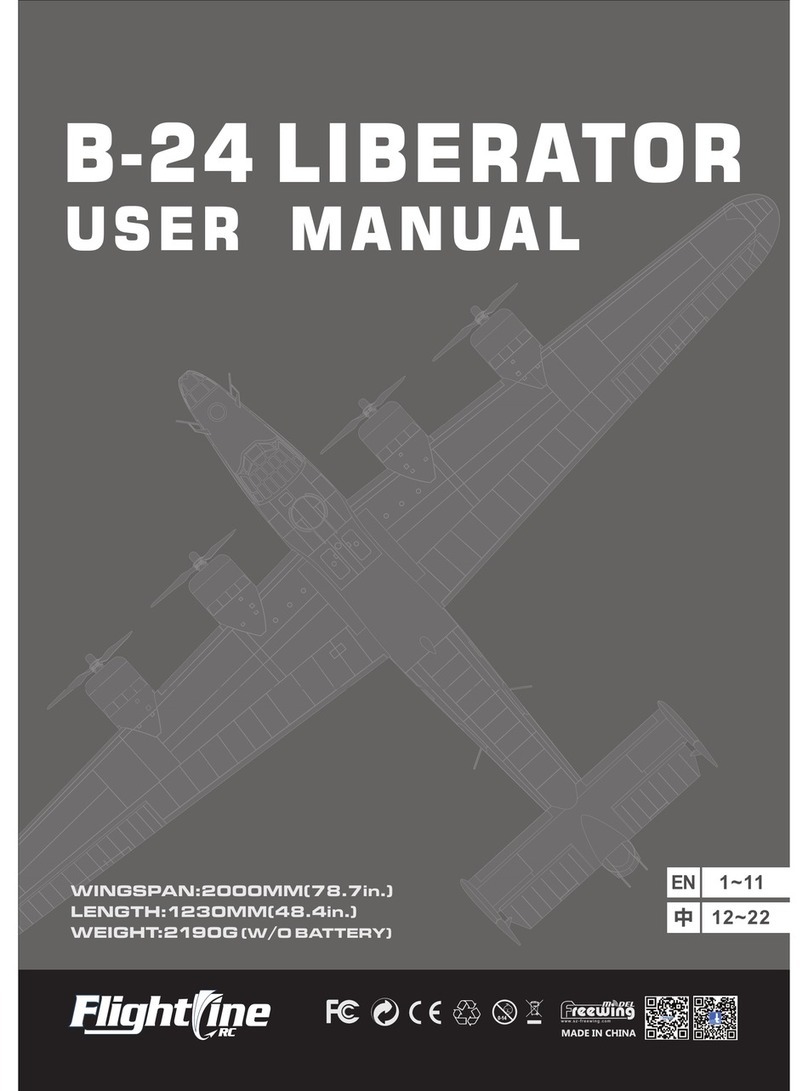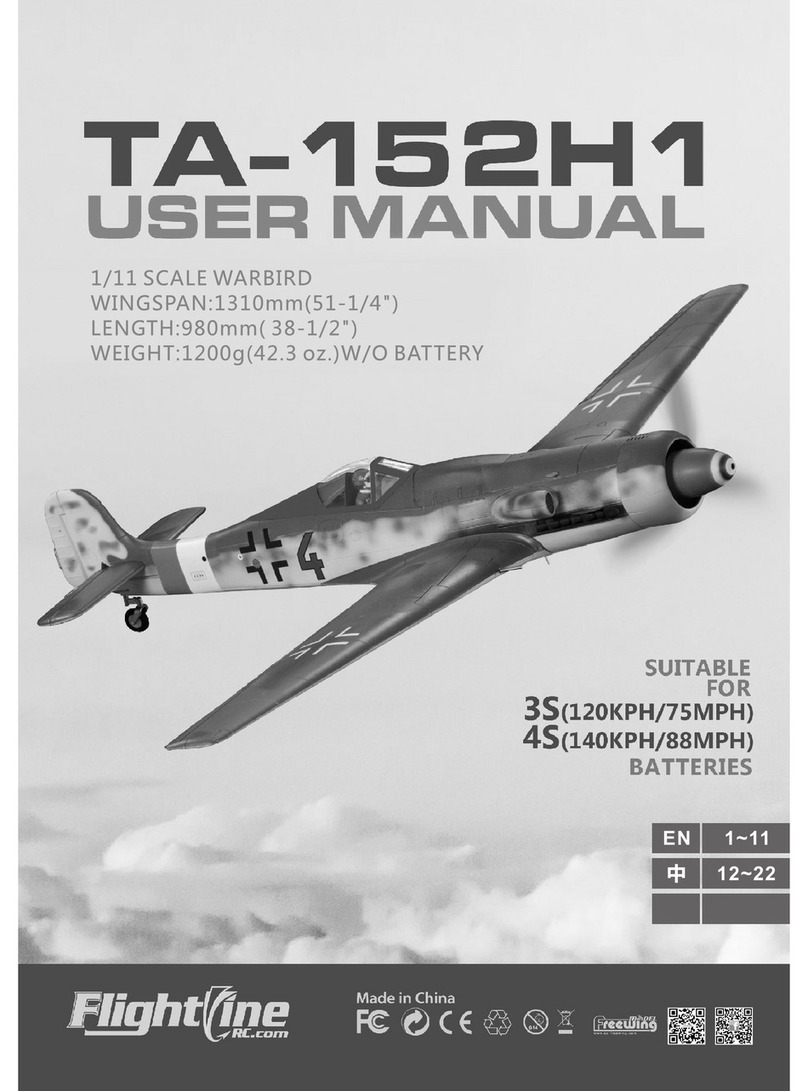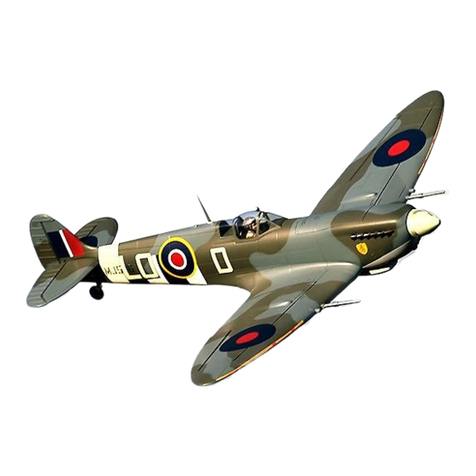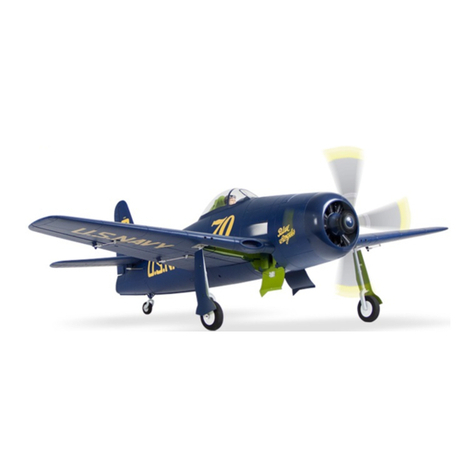
1TA-152H1
1
Index
Item No.:FLW05
Brief History
The Ta-152H1 is a high speed piston fighter developed from the Fw-190 near the end of World War II in Nazi Germany. Compared
with the Fw-190D which was a "quick fix", the Ta-152 was the ultimate "solution" however, due to the late development period, the
production quantity was too small to affect the war's outcome. In spite of this, it's excellent performance, still won the praise of both
sides of the war The Ta-152H1, along with the P-51D and the Spitfire XIV, were known as the ultimate piston fighters, their flight
performances being close to the limit of a piston engine fighter.
Overview
An 1/11 scale gives the Ta-152H1 a 980mm length and a wingspan of 1310mm Its shape and contour lines are scaled down
from the actual aircraft and scale details and exquisite paint made it extremely realistic in appearance. Extensive use of plastic parts,
allow for quick and easy installation of the main wing, horizontal and vertical tail surfaces and we have utilized carbon fiber rods in the
main wing, horizontal tail and every control surface, to avoid distortions during high speed flight, making the airplane extremely stable.
Plastic hinges included with the kit allow you to further increase the reliability of the control surfaces. Inside the fuselage, we have
designed a ventilation system, allowing the ESC to be effectively cooled thereby prolonging its life. The battery tray is mounted with
screws,and divided into two levels,making it easy to install the ESC and a non- slip mat effectively prevents the battery from moving.
The Ta-152H1 uses a high power 3648-830KV brushless motor with a 10x6 3-blade scale propeller, a light fuselage (1200 gm
without the motor) with a large battery compartment which can accommodate 3S/4S batteries for flight. When using a 3S battery, it can
reach speeds up to 120kph/75mph. when using 4S battery, it can reach speeds up to 140kph/88mph. Also available is a special 2-blade
high speed power system set( which includes a 2-blade 12x8 propeller, spinner and back plate along with a 3648 880 kv motor).
Using this modification, the Ta-152H1 can reach top speeds of up to 160kph/100mph!
Flight features
The FlightLineRC Ta-152H1, with its long wingspan, has excellent flight stability and a small turning radius. The smaller body
combined with it's high power give it excellent speed and climb performance. The wide main landing gear (350 mm), helps offset the
propeller torque at take off, making it easier to maintain directional control during take off. With the stock power setup utilizing 3S/4S
batteries, it has a 18M/15M take-off run. When landing with flaps, there will be a slight nose down tendency, a slight flap/up elevator mix,
will correct this and help make for a slow and gentle landing.
Color scheme introduction
This airplane has a factory applied paint scheme as well a a variety of decals to chose from as well as placement instructions, so
you can customize your airplane to suit your taste.
1. This is not a toy! Operators should have some basic experience. Beginners should operate only under the guidance of a professional
instructor.
2. Before beginning assembly, please read through the instructions and carefully follow them through the build.
3. Freewing and it's vendors will not be held responsible for any losses due to improper assembly and operation.
4. Model airplane operators must be at least 14 years of age.
5. This airplane is made of EPO foam material, covered with surface spray paint. Don't use chemicals to clean as it may cause damage.
6. You should avoid flying in areas such as public places, areas with high voltage power lines, nearby highways or airports or an other
areas where laws and regulations clearly prohibit flight.
7. Do not fly in bad weather conditions, including thunderstorms, snow, etc.
8. Lipo batteries should be properly stored in a fire safe container and be kept at a minimum of 2M distance away from flammable or
explosive materials.
9. Damaged or scrap batteries must be properly discharged before disposal or recycling to avoid spontaneous combustion or fire.
10. At the Flying Field, properly dispose of any waste you have created. Don't leave or burn your waste.
11. Make sure your radio is powered up and the throttle is in low position before connecting the Lipo Battery.
Build Notes
Product Basic Information, Package List 2
Assembly:
Fuselage and Main Wing 3
Elevator Assembly 4
Installing Elevator/Rudder Pushrods Guns
Pitot Tube, Antennae and Boarding Step 5
Servo Introduction/Installation 5
Main Wing Servo Installation 6
Elevator/Rudder Servo Installation 6
Pushrod Instructions 6
Main Landing Gear Assembly 7
Tail Gear Installation 7
Center of Gravity 7
Battery Installation 8
Control Board Use Introduction 8
Motor Parameters 8
Power Systems 9
ESC Installation 9
Control Direction Test 10
Dual Rates 10
Installing the Optional Plastic Hinges 11




















